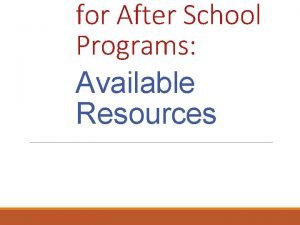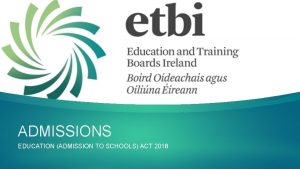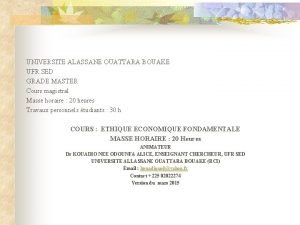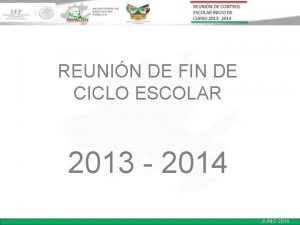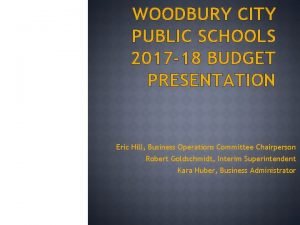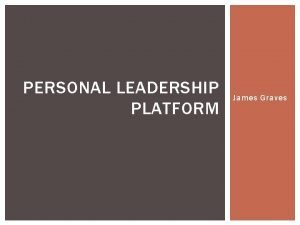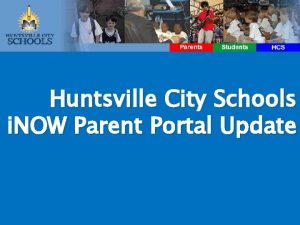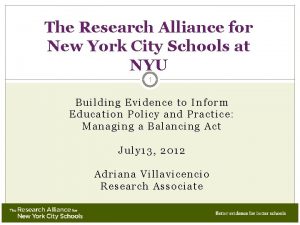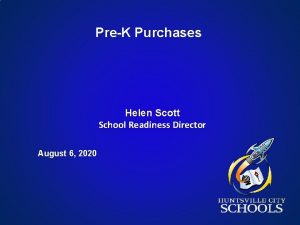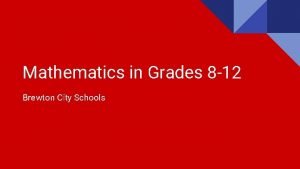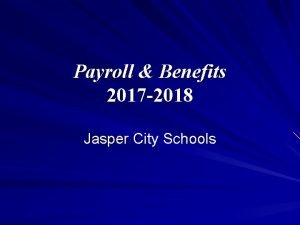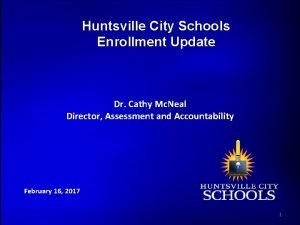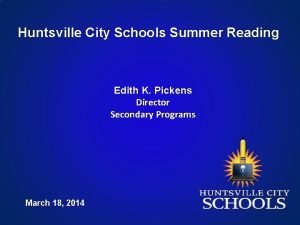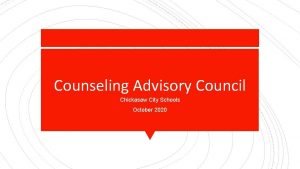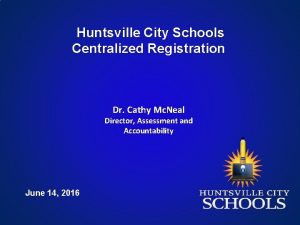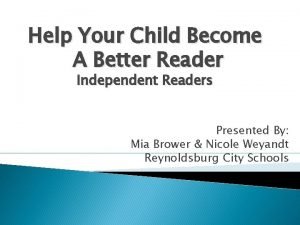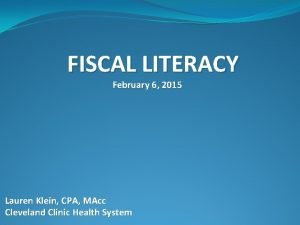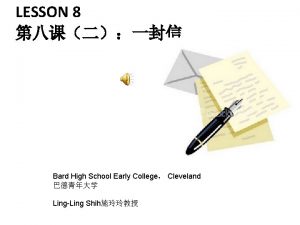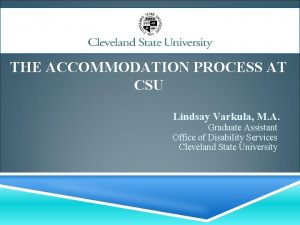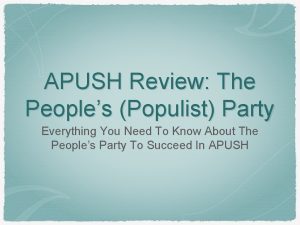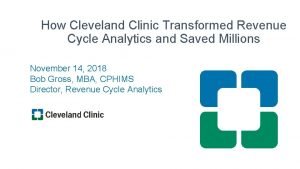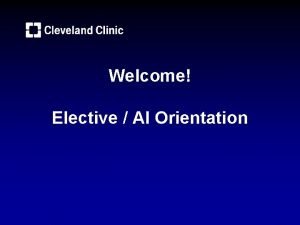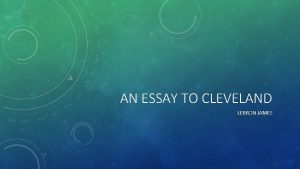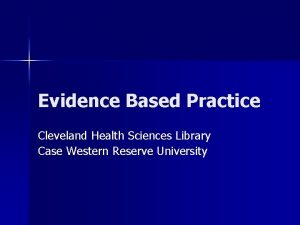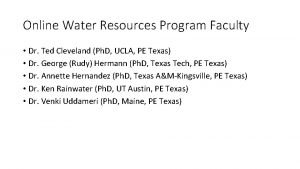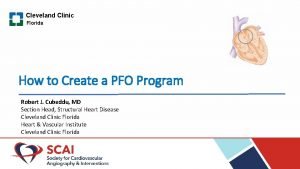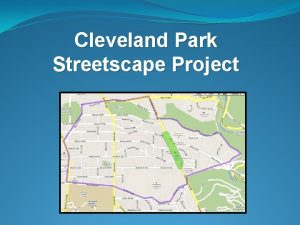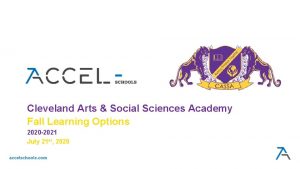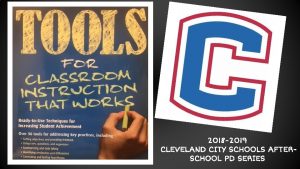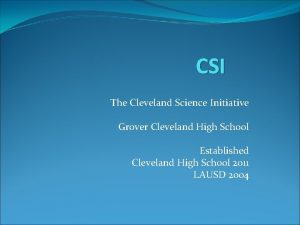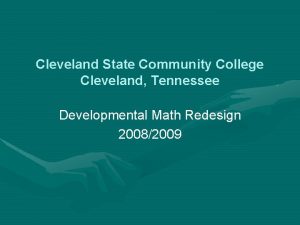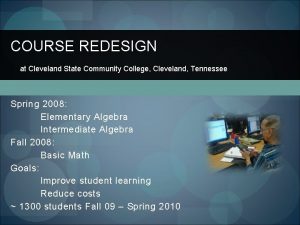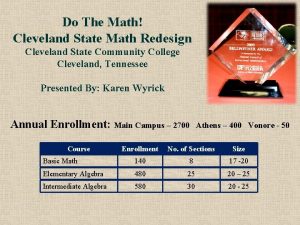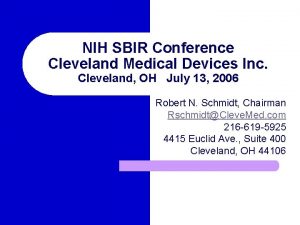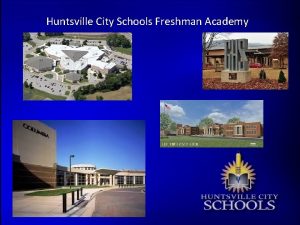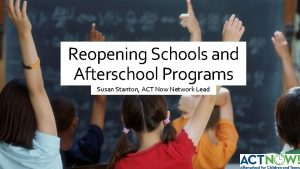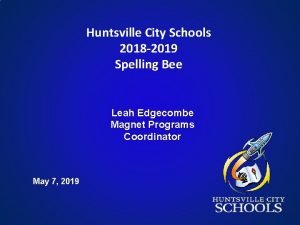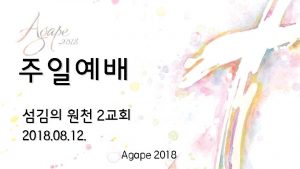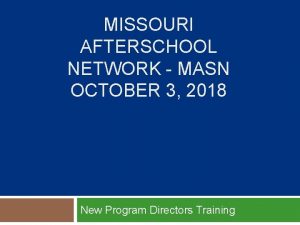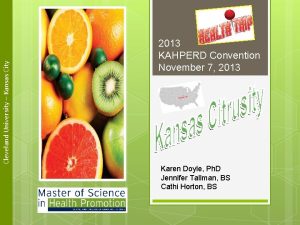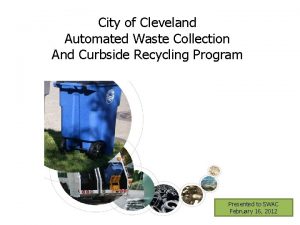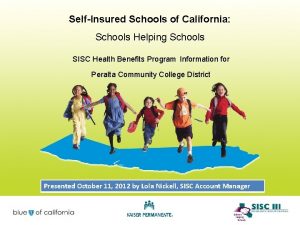Chalkduster 2018 2019 CLEVELAND CITY SCHOOLS AFTERSCHOOL PD















































- Slides: 47

Chalkduster 2018 -2019 CLEVELAND CITY SCHOOLS AFTERSCHOOL PD SERIES

SESSION 4 CUES, QUESTIONS, AND ADVANCE ORGANIZERS

CUES, QUESTIONS, AND ADVANCE ORGANIZERS “The beginning seems to be more than half of the whole. ” – Aristotle Benefits of cues, questions, and advanced organizers -focuses learning on important content -motivate students by tapping into curiosity -activate relevant background knowledge -deepen their knowledge by requiring the use of criticalthinking skills

HOOKS AND BRIDGES • This tool is a lesson-opening technique that uses thoughtprovoking questions or activities to activate students’ background knowledge to the upcoming learning.

HOOKS AND BRIDGES BENEFITS 1. 2. 3. Gets students engaged and interested Activates students’ background knowledge Connects students’ initial thinking to the learning to come so that students can use their background knowledge as a foundation to build on

HOOKS AND BRIDGES EXAMPLES • Appeal to Students’ Interests • Video of Le. Bron James • Invites Speculation • Time Machine • Inspires Creative Thinking and involves Physical Movement • How is guilt like a stain? • Asks Students to Make Personal Connections • How do changing seasons affect your life? • Sparks Curiosity • Glitter

VOCABULARY KNOWLEDGE RATING • This tool uses a visual organizer to preview the vocabulary terms that students will encounter during an upcoming unit; students then use the organizer to rate and track their growing understanding of those terms as the unit progresses.

VOCABULARY KNOWLEDGE RATING BENEFITS 1. 2. 3. Focuses learning on the important content to come Students can monitor their own understanding. Students rate their knowledge again at the end of the unit to see how their understanding has grown.

VOCABULARY KNOWLEDGE RATING EXAMPLE

VOCABULARY KNOWLEDGE RATING EXAMPLE

VOCABULAR Y KNOWLEDGE RATING EXAMPLE

ANTICIPATION GUIDE • This tool previews content, activates prior knowledge, and sparks engagement by having students take positions on upcoming topics.

ANTICIPATION GUIDE • Identify the content you want students to understand. • Generate a list of questions about the content. • Students read statements and decide whether they agree or disagree with them. • Survey students and probe responses for reasoning. • Conduct the lesson about the content. • Students review their positions to see if they have changed or been reinforced. • Use responses to evaluate understanding and ability to support a position with evidence.

ANTICIPATION GUIDE BENEFITS • Helps students get a pre-learning grasp on the content • Promotes a spirit of inquiry • Teaches students how to reflect on how their thinking has grown or changed

ANTICIPATION GUIDE EXAMPLES

ANTICIPATION GUIDE EXAMPLES

FROM TOPICS TO “TOP PICKS” • This tool helps students build a framework for learning by previewing upcoming topics. • This tool helps teachers design more engaging lessons by providing information about the topics students find the most interesting.

FROM TOPICS TO “TOP PICKS” BENEFITS • Students learn better when they’re interested in what they’re studying. • Students assess interest using a simple ranking system (most interesting to least interesting). • Provides specific recommendations for capitalizing on and growing student interest in academic content.

FROM TOPICS TO “TOP PICKS” EXAMPLE

FROM TOPICS TO “TOP PICKS” ACCOMMODATE INTEREST

FROM TOPICS TO “TOP PICKS” BROADEN INTEREST

QUESTIONING IN STYLE • This tool identifies four different styles of questions that can be used to activate, deepen, and assess student learning.

QUESTIONING IN STYLE BENEFITS Varying the kinds of questions that we pose in our classrooms gives a complete picture of what students know and understand. RECALL – remember and describe REASONING – think analytically CREATING – generate solutions RELATING – connect with content on personal level

QUESTIONING IN STYLE EXAMPLE

QUESTIONING IN STYLE EXAMPLE

QUESTIONING IN STYLE EXAMPLE

BEFORE, DURING, AND AFTER (BDA) • This tool helps students develop high-quality responses to classroom questions – whenever those questions are asked.

BEFORE, DURING, AND AFTER (BDA) 1. Prepares students to think BEFORE the question 2. Pose the question in a way that invites students to explore possible responses (DURING) 3. Process student responses through probing, paraphrasing, and the use of varied classroom participation techniques (AFTER)

BEFORE, DURING, AND AFTER (BDA) BENEFITS 1. Trains students to think deeply before, while, and after responding to questions. 2. Makes the questioning process active. 3. Deepens responses through probing and participation.

BEFORE, DURING, AND AFTER (BDA) EXAMPLE

BEFORE, DURING, AND AFTER (BDA) EXAMPLE

START WITH A STORY • This tool provides a range of ways to use narrative advance organizers (in the form of stories) to frame content, build intrigue, and prepare students for new learning.

START WITH A STORY BENEFITS • Provides variety of ways to use stories to capture students’ attention, build deeper understanding, and prime students for learning to come.

START WITH A STORY EXAMPLES • Start with a fable • Start with a real-world story • Start with a personal story • Start by having students share personal stories

A FEW NOTES • Be sure your story has a purpose! • Story should be linked to content and have a clear purpose. • Don’t limit yourself to traditional print sources. (ex. video clips)

S-O-S GRAPHIC ORGANIZERS • This tool uses graphic organizers before, during, and after instruction to save students from downing in a sea of information!

S-O-S GRAPHIC ORGANIZERS • Show them how information is organized before instruction begins. • Organize the information they acquire during learning. • Summarize key points after learning.

S-O-S GRAPHIC ORGANIZERS BENEFITS • Helps students to recognize what is/isn’t important and how information fits together.

S-O-S EXAMPLE Show them the graphic organizer and explain what information will be discussed and where to record it.

S-O-S EXAMPLE Organize the information during learning/instruction.

S-O-S EXAMPLE Summarize information with a simple comparative writing frame.

POWER PREVIEWING This tool teaches how to skim a text strategically by searching for textual cues, making predictions, and determining how a text is structured.

POWER PREVIEWING How to: - Use a graphic organizer (one is provided) - Don’t assume the Power Previewing steps are selfexplanatory! - Explain and model

POWER PREVIEWING BENEFITS 1. Activates prior knowledge 2. Organizes information 3. Builds a conceptual framework

POWER PREVIEWING EXAMPLE

ESL CONNECTION • Students construct meaning by making connections between new information and background knowledge. • Cues and questions help make these connections. • Teachers can design questions based on stage of language acquisition. • Wait time is essential as it will lead to higherquality responses.

AFTER SCHOOL PD DATES December 6, 2018 January 17, 2019 February 7, 2019
 Waaweb
Waaweb Huntsville.powerschool
Huntsville.powerschool Safety target reach schools
Safety target reach schools Admissions to schools act 2018
Admissions to schools act 2018 Que letra continua m v t m j
Que letra continua m v t m j Ufr sed bouaké
Ufr sed bouaké Conest seph
Conest seph Woodbury city public schools
Woodbury city public schools Googleclass rome
Googleclass rome Huntsville city schools parent portal
Huntsville city schools parent portal Research alliance for nyc schools
Research alliance for nyc schools Pickerington city schools
Pickerington city schools Huntsville city schools staff portal
Huntsville city schools staff portal Brewton city schools geometry
Brewton city schools geometry Jasper city schools employment
Jasper city schools employment Arab elementary school lunch menu
Arab elementary school lunch menu Huntsville city schools kindergarten registration
Huntsville city schools kindergarten registration Bellwood elementary school chesterfield va
Bellwood elementary school chesterfield va Edith pickens
Edith pickens Alexandria city public schools
Alexandria city public schools Chickasaw city schools jobs
Chickasaw city schools jobs Huntsville city schools kindergarten registration
Huntsville city schools kindergarten registration Parma city schools bell schedule
Parma city schools bell schedule Huntsville city schools pre k
Huntsville city schools pre k Reynoldsburg city schools
Reynoldsburg city schools Lauren klein cleveland
Lauren klein cleveland Bard high school cleveland
Bard high school cleveland Varkula
Varkula Csu otd
Csu otd Apush populist party
Apush populist party Cleveland board of education v. lafleur
Cleveland board of education v. lafleur Revenue cycle analytics
Revenue cycle analytics Dr lashner cleveland clinic
Dr lashner cleveland clinic Cleveland
Cleveland Grover cleveland stirred political opposition by
Grover cleveland stirred political opposition by Medicine wheel cleveland
Medicine wheel cleveland Ccf intranet
Ccf intranet Essay to cleveland from lebron james
Essay to cleveland from lebron james Cleveland health sciences library
Cleveland health sciences library Ted cleveland
Ted cleveland Robert cubeddu md
Robert cubeddu md Sharon cooney cleveland police
Sharon cooney cleveland police Uss cleveland (lpd-7)
Uss cleveland (lpd-7) Osd
Osd Cleveland clinic foundation
Cleveland clinic foundation Cleveland park streetscape
Cleveland park streetscape Cleveland arts & social sciences academy
Cleveland arts & social sciences academy Cleveland hough riots
Cleveland hough riots
